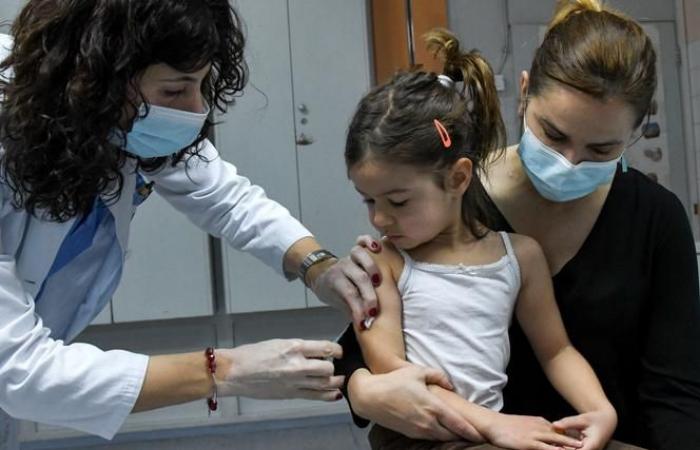The number of measles cases worldwide is increasing, while vaccination coverage stagnates. In 2023, 10.3 million cases of this highly contagious viral disease were recorded, an increase of 20% compared to the previous year, according to estimates published jointly, Thursday, November 14, by the World Health Organization. Health (WHO) and the US government agency the Centers for Disease Control and Prevention.
This clear increase is primarily due to insufficient vaccination coverage in many countries. Globally, it is estimated that 83% of children have received a first dose of vaccine, and only 74% have been administered a second injection. However, for a population to be immunized, we consider that 95% of children must have access to this two-dose vaccination schedule.
Access to these vaccines has been disrupted by the Covid-19 pandemic, reaching vaccination coverage of only 81% in 2021, the lowest level since 2008. While many efforts have been made to reach the approximately 22 million children unprotected from the virus, vaccination coverage still remains below pre-pandemic levels (86% in 2019). As a result, 57 countries experienced a major measles epidemic in 2023, mainly in Africa, the Near East, the Middle East and South Asia.
Read also | Article reserved for our subscribers Childhood vaccinations: WHO and UNICEF warn of the increase in the number of unvaccinated children around the world
Read later
Despite this increase in cases in one year, the number of deaths from the disease decreased by 8%, from 116,800 victims in 2022 to 107,500 in 2023. This is notably explained by by the fact that “the increase in cases has occurred in countries and regions where children with measles are less likely to die, due to better nutritional status and better access to health services”explain the organizations in a press release published Thursday.
The WHO Europe region, a vast territory stretching from the Atlantic Ocean to the Pacific Ocean and bringing together 53 countries, notably saw the number of patients explode in 2023, going from an incidence of 0.9 cases per one million inhabitants in 2022 to 74.7 in 2023. On the Central Asian side, Kazakhstan accounts for almost half of this upsurge, while in the European Union, Romania is one of the most affected countries.
Eradication possible
“The increase in cases is certainly significant in the Europe region, but from a low threshold”nuance Natasha Crowcroft, WHO technical advisor for measles and rubella. Mortality is lower there than elsewhere (22 deaths in 2023) because vaccination coverage is high, at 95% for the first dose and 91% for the second. “But more than 70% of deaths occur in Africa”specifies the advisor, with nearly 76,000 deaths in 2023.
You have 30.89% of this article left to read. The rest is reserved for subscribers.







